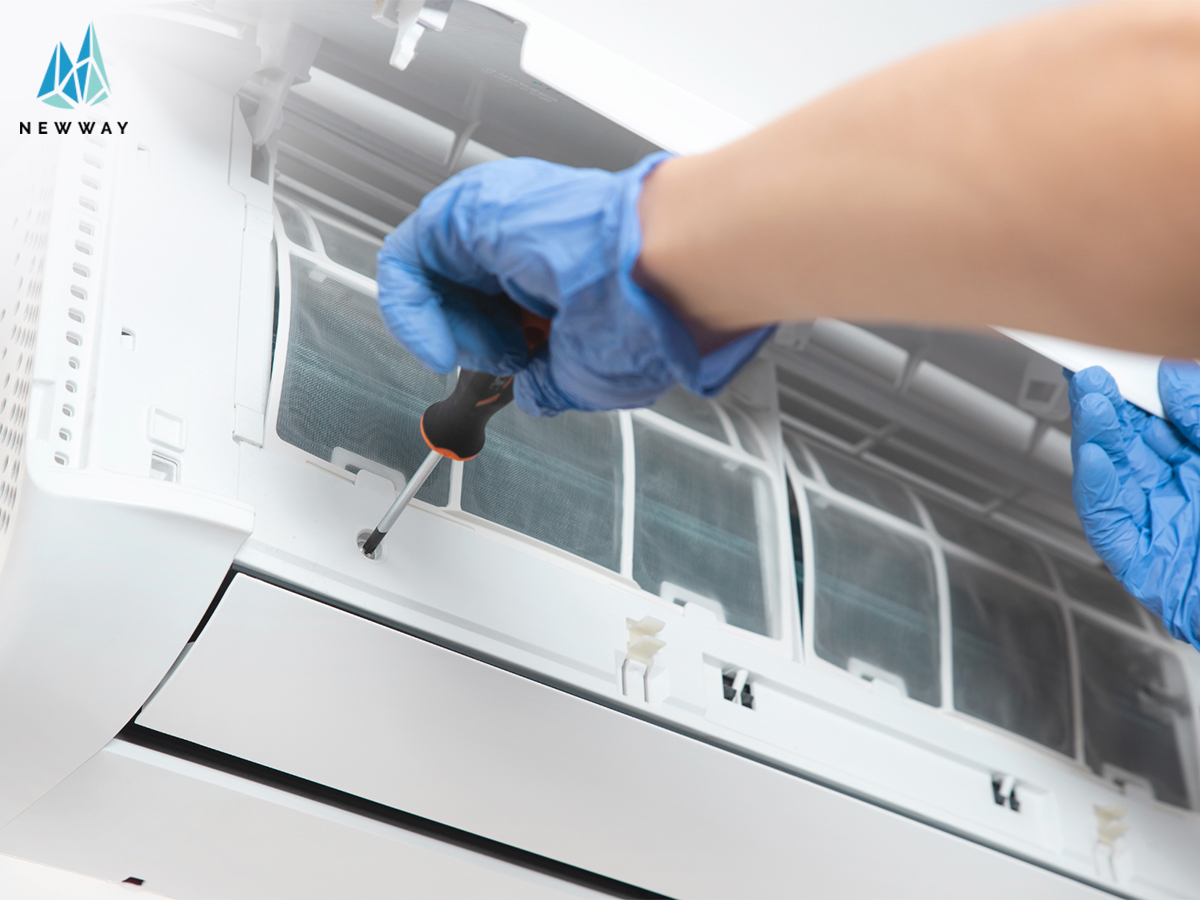
PART 1 – INTRODUCTION
As temperatures rise and the heat becomes more intense, the idea of installing an air conditioner becomes more appealing. However, air conditioning installation services go beyond simply placing a unit in your home or office; they involve careful planning, precise execution, and attention to detail. It’s essential to understand every aspect of the process to ensure the perfect blend of comfort and efficiency.
Whether you’re a homeowner seeking an ideal cooling solution or a business owner aiming to optimise your workspace environment, assessing your cooling needs is crucial. This helps determine the right type and size of air conditioning unit for your specific requirements to make your investment worthwhile. In this article, we will equip you with the necessary knowledge to make informed decisions for your ultimate comfort and efficiency.
PART 2 – BASICS OF AIRCON INSTALLATION
2.1 Basic Considerations Before Aircon Installation
Proper aircon installation in Singapore not only ensures optimal performance so you can enjoy all-year-round comfort but also improves energy efficiency and indoor air quality (IAQ). For a seamless installation process, make sure to consider these factors:
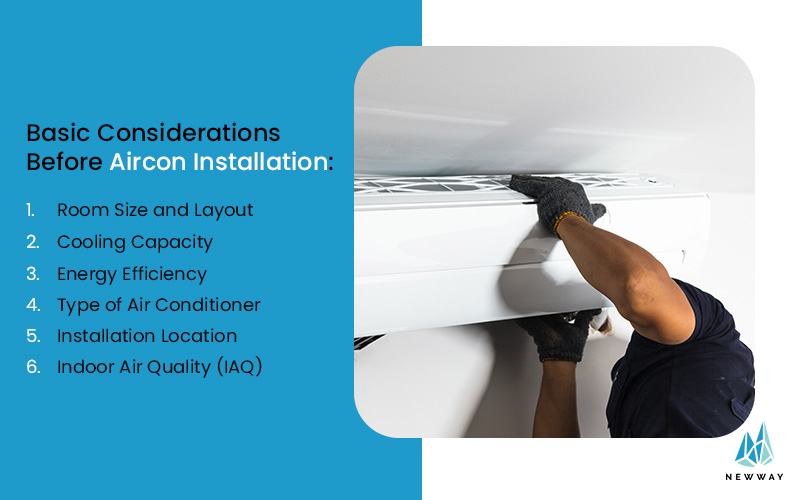
1. Room Size and Layout
The size and layout of the room can significantly impact the effectiveness of your air conditioning system. A unit that’s too small won’t cool the space adequately, while an oversized unit can lead to inefficiencies and higher energy costs. Therefore, it is essential to assess the dimensions and design of your space to select a system that meets your cooling needs precisely. Here’s how:
- Measure the Room Size
Start by measuring the length and width of the room you intend to cool. Multiply these dimensions to calculate the area in square metres. For larger spaces or multiple rooms, consider the total area that needs cooling.
- Consider the Room’s Layout
You should also examine the layout of your room to note unique features like high ceilings, large windows, or open-plan designs. These elements can impact the effectiveness of your air conditioning unit, sometimes requiring a system with higher capacity or additional features.
- Evaluate Insulation Quality
Poor insulation can lead to significant cooling loss, reducing the efficiency of your air conditioning system. Remember to check the quality of insulation in your room, including walls, windows, and doors, to enhance the system’s performance.
2. Cooling Capacity
Cooling capacity, measured in British Thermal Units (BTUs), determines how effectively an air conditioner can cool a room. Matching the BTU rating to the room size and heat load guarantees optimal cooling performance. For convenience and accuracy, we recommend engaging an aircon contractor to perform a professional assessment that can help you determine the appropriate capacity, avoiding issues like over-sizing or under-sizing.
Learn more: Troubleshooting Your Air Conditioning Unit for Optimal Performance
3. Energy Efficiency
Given that energy production significantly contributes to greenhouse gas emissions, adopting energy-efficient practices is essential for reducing costs and environmental impact. In this regard, energy-efficient air conditioners with high SEER (Seasonal Energy Efficiency Ratio) ratings are an option. They feature cutting-edge technology, including advanced insulation, improved compressors, and efficient motors to minimise emissions associated with electricity generation.
4. Type of Air Conditioner
Choosing the right type of air conditioner is vital for meeting your specific cooling requirements and accommodating space constraints. Each offers distinct advantages and suitability for different environments. Understanding the options available can help you find one tailored to your needs.
- Window Units
Window air conditioners, as their name suggests, are designed for installation in windows. These compact and energy-efficient units are intended to cool a single room per unit.
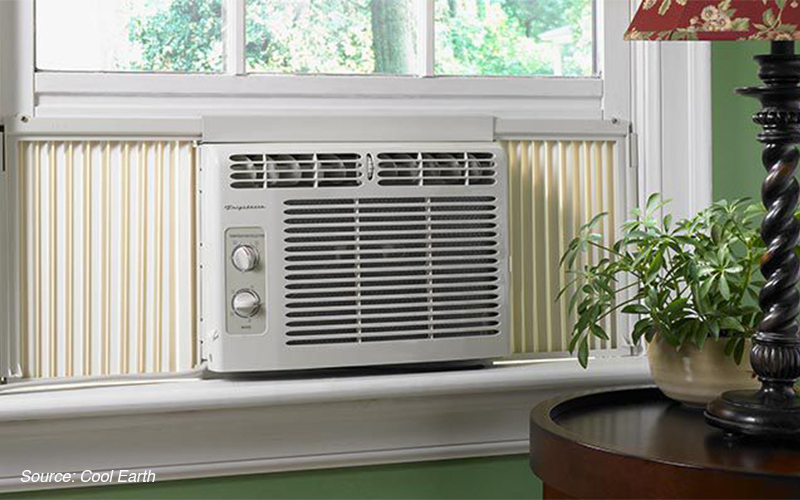
Source: Cool Earth
- Split Systems
Split systems, comprising indoor and outdoor units, ensure effective cooling throughout designated areas. These efficient air conditioning systems are suitable for cooling multiple rooms, offering quiet operation and maintaining a peaceful indoor environment.
- Portable Units
Portable air conditioners provide a convenient cooling solution, easily movable between rooms or locations according to preferences. Simple to set up and operate, they effectively cool the room’s air, reducing the overall temperature.
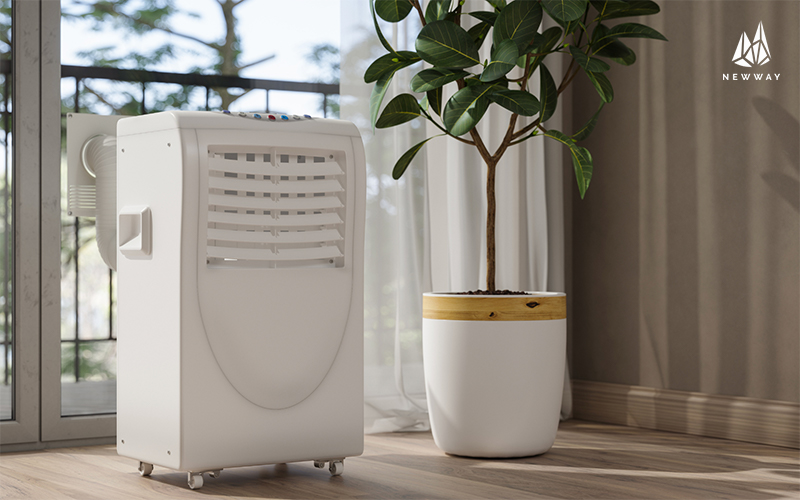
- Central Air Conditioning
Central air conditioning is highly recommended for cooling large spaces. It is designed to provide uniform cooling throughout the building by circulating cold air through return and supply ducts. These ducts, typically pre-installed in the walls, ensure efficient distribution of cool air to different rooms or areas.
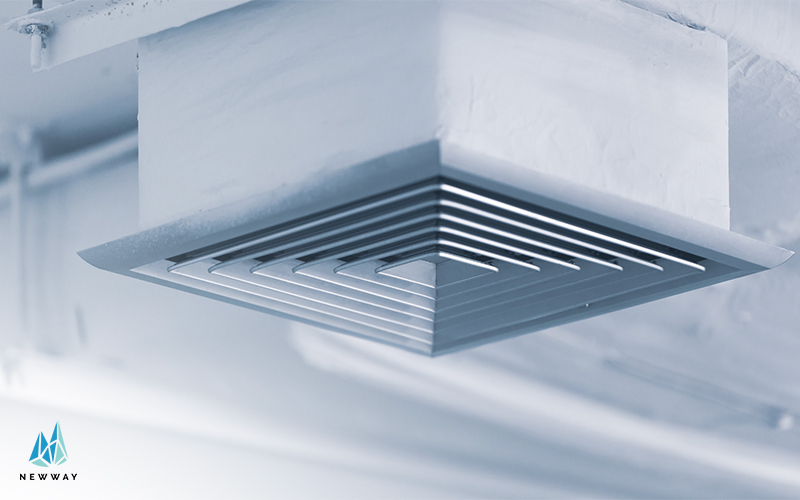
- Packaged Single Splits
Featuring high energy efficiency, packaged single splits provide flexibility in installation and the ability to cool different zones independently.
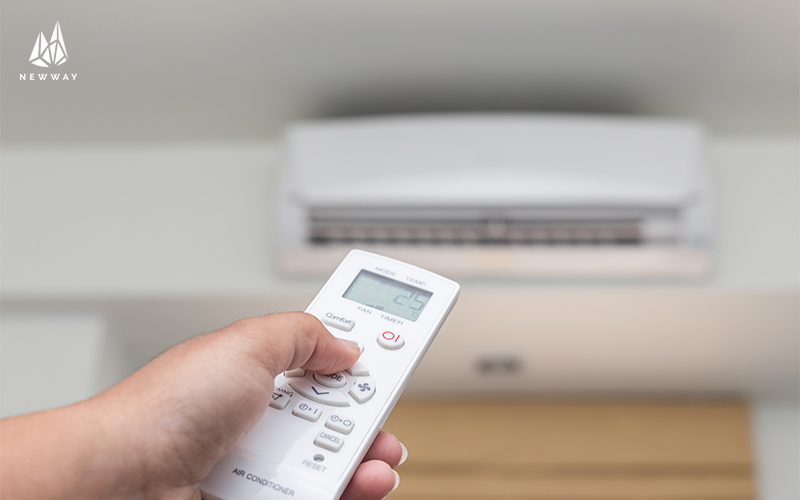
5. Installation Location
The location of your air conditioner significantly impacts its performance. Proper placement contributes to unobstructed air circulation throughout the room. For outdoor units, placing them in shaded areas helps prevent overheating, which can otherwise cause the unit to work harder, leading to higher energy consumption. Indoor units should be positioned to allow even distribution of cool air. Mounting the indoor unit at an appropriate height and directing the airflow towards the centre of the room, or the most frequently occupied areas, ensures optimal cooling performance and comfort.
6. Indoor Air Quality (IAQ)
Indoor Air Quality (IAQ) refers to the air condition within and around buildings and structures, with a particular focus on the health and well-being of occupants. Maintaining good IAQ is essential for health, comfort, and system efficiency. Here are the key reasons to consider IAQ during air conditioning installation services:
(i) Improved Health and Well-being
Properly installing an air conditioner improves indoor air quality by reducing pollutants, allergens, and contaminants. This facilitates clean and fresh air circulation, helping to mitigate the risk of respiratory issues and allergies, ultimately promoting a healthier indoor environment. On top of that, you may also opt for air conditioners with air purification and cleaning functions to further enhance the indoor air quality.
(ii) Energy Efficiency
Air conditioning systems designed with IAQ in mind incorporate various features to promote energy efficiency. Enhanced ventilation control allows for better airflow management, ensuring even distribution of fresh air throughout the space while avoiding energy wastage. Additionally, these systems prevent moisture buildup by effectively controlling humidity levels and optimising the system’s workload.
(iii) Long-Term Cost Savings
Good indoor air quality is vital for preventing mould growth, system malfunctions, and property damage, and can be achieved through proper air conditioner installation. Modern air conditioning systems are equipped with drainage systems designed to remove excess moisture produced during the cooling process. By preventing moisture from pooling and damp areas that are conducive to mould growth, these systems effectively safeguard indoor environments.
Learn more: Things to Know About Aircon Installation: Choosing the Right Aircon Unit
2.2 Optimising Airflow During Aircon Installation
Now that you have a clearer idea of what to consider before installing an aircon, we’ll also walk you through the process of optimising airflow. These techniques are often adopted by professional aircon services in Singapore.
1. Positioning of Indoor Unit
Avoid placing your indoor unit near heat sources as this may force the aircon to work harder due to heat concentration in the area. This could diminish cool air circulation, compromising the overall cooling performance. In addition, install your indoor unit away from areas with obstructions like furniture or curtains, which can block the airflow and reduce its efficiency.
2. Optimal Placement of Outdoor Unit
As excessive heat can force the unit to work harder and increase energy consumption, placing the outdoor unit in a shaded area prevents overheating. You may also want to elevate the unit and place it on a stable surface to protect it from debris, flooding, and pests, which can cause damage or obstruct airflow. In addition, a stable surface minimises vibrations and noise, reducing wear and tear on the system and enhancing indoor comfort by maintaining low noise levels.
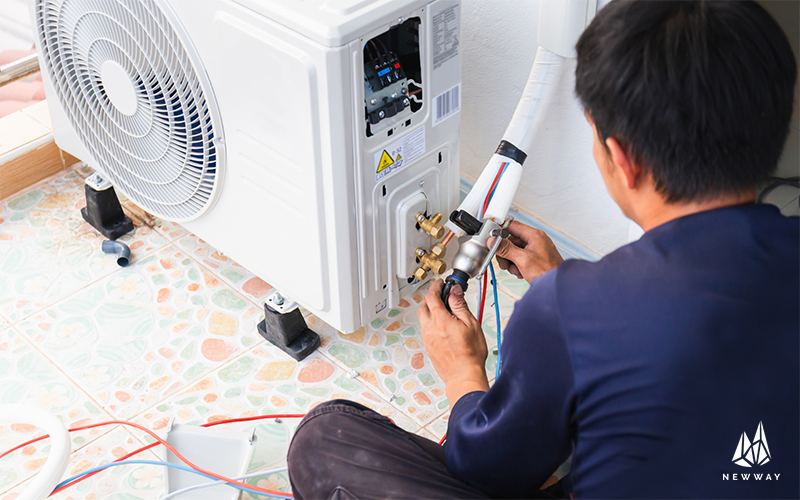
3. Clearance Around the Indoor Unit
Adequate clearance around the indoor unit is necessary for proper airflow and ventilation. Maintain a distance of at least a few feet between the unit and any obstacles to prevent airflow restrictions for efficient cooling performance. For optimal results and regular maintenance, consider professional aircon servicing in Singapore.
4. Proper Sealing of Ductwork
Proper sealing of ductwork prevents air leaks that allow cooled air to escape from the air conditioning system. When air leaks occur, the system must work harder to maintain the desired temperature, leading to higher energy consumption and increased utility bills. Therefore, it’s important to regularly inspect ductwork for signs of damage or leaks. If any issues are detected, promptly seal them to prevent further escalation and potential failure of your air conditioning system.
5. Direction of Air Vents
When air vents are positioned correctly, they direct the cool air towards the centre of the room or towards areas that require more cooling. This helps in mixing the cool air with the existing warm air, creating a balanced and uniform temperature throughout the space. This even distribution prevents hot spots, contributing to overall cooling efficiency and comfort.
6. Shading and Insulation
Heat transfer compromises the cooling performance of your air conditioner. To prevent overheating and reduce the system’s workload, install shades or awnings, and window solar films to prevent excessive heat accumulation in the house. Alternatively, incorporate proper insulation around ductwork to keep cooled air at the desired temperature as it travels through the ducts to various areas within your premise. This paves the way for lower energy consumption and operational costs.
When considering these optimisations, remember to factor in air conditioner installation cost in Singapore that matches your budget. Choosing a reputable installer ensures that the unit is properly set up for optimal performance, further enhancing efficiency and reducing maintenance costs.
2.3 Common Aircon Installation Mistakes to Avoid
Proper air conditioning installation is crucial for maintaining the system’s optimal performance and offering comfort within your space. However, several common mistakes can undermine these goals, compromising the operation of your air conditioner. To help you avoid these pitfalls, here’s what you should steer clear of during aircon installation.
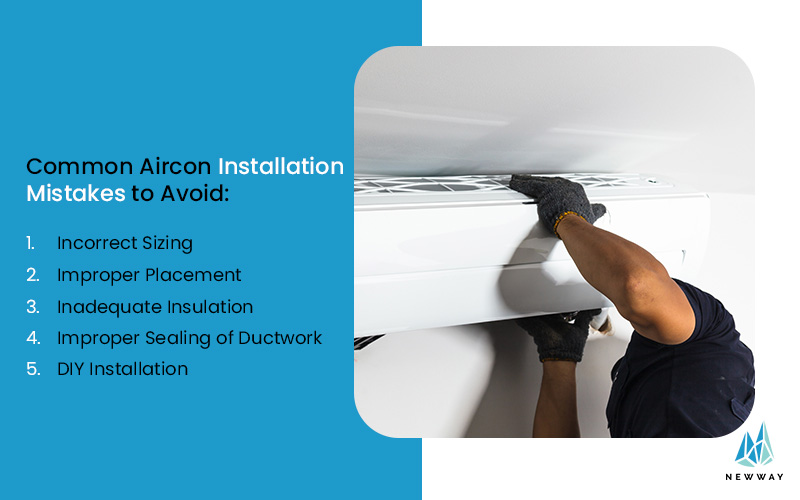
1. Incorrect Sizing
Choosing the wrong-sized air conditioner for your space is one of the most common mistakes. An undersized unit will struggle to cool your space effectively, running continuously and driving up energy costs. Conversely, an oversized unit will cool the area too quickly without properly dehumidifying the air, leading to a humid environment. To select an appropriate size of air conditioning unit, conduct a thorough assessment of your cooling needs, the size, layout, and insulation of your space.
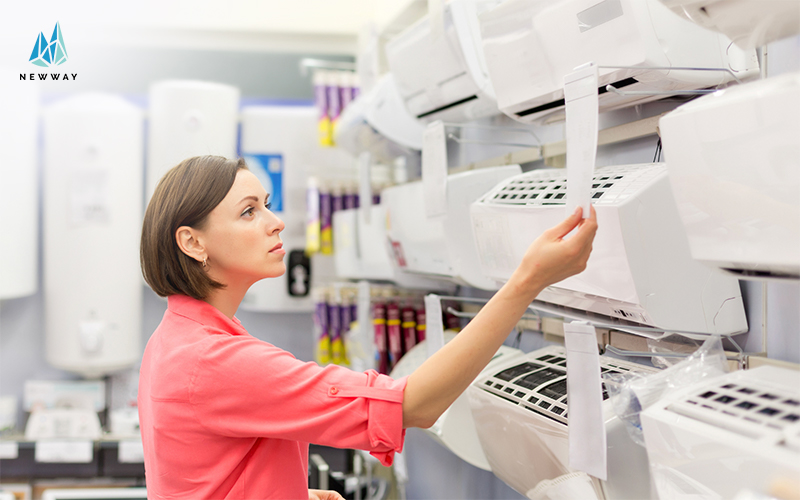
2. Improper Placement
Don’t overlook the placement of both indoor and outdoor units as it may impact the efficiency of your air conditioning system. Poor positioning not only increases energy usage but also leads to premature wear and tear.
- Blocked Airflow
Placing the outdoor unit in an enclosed or poorly ventilated area, including one near obstructions, may prevent cool air from circulating effectively throughout the room. This makes it harder for the system to dissipate heat, diminishing the efficiency of the cooling process.
- Exposure to Elements
Be cautious when installing outdoor units in areas prone to debris, flooding, or extreme weather conditions. These factors can cause physical damage and deterioration over time. Elevate and shield the unit from external elements to prevent damage for a prolonged lifespan.
3. Inadequate Insulation
As part of the proper aircon installation process in Singapore, adequate insulation around ductwork and the building envelope is essential for preventing cool air from escaping and warm air from infiltrating. On top of ensuring your air conditioning system operates efficiently, investing in quality insulation can lead to substantial energy savings and greater comfort.
4. Improper Sealing of Ductwork
Air leaks in ductwork can severely compromise the functionality of your air conditioning system. Leaks allow cooled air to escape before it reaches the intended areas, forcing the system to work harder and increasing energy consumption. Common causes of air leaks in ductwork include:
- Ductwork is not properly sealed during installation, hence releasing gaps and seams for air leaks.
- Ductwork can deteriorate over time, resulting in cracks and holes where air can leak out.
- Accidental impacts or damage during renovations or repairs can create openings in the ductwork.
- Duct sections that are not securely connected make it prone to air leaks at the joints.
To maintain system efficiency, regularly inspect and maintain the ductwork to promptly identify and repair any leaks. Additionally, check indoor air quality (IAQ) to prevent contaminants from building up in the airflow system so you can enjoy a healthier indoor environment.
5. DIY Installation
Attempting to install an air conditioning system without professional assistance can lead to numerous issues. The risks of incorrect sizing, improper placement, and inadequate insulation are significantly higher, all of which can compromise the system’s performance. Apart from that, mishandling refrigerants and electrical connections can pose serious safety hazards. For instance, faulty electrical connections can cause short circuits, potentially leading to fires that endanger property and lives alike. To avoid these issues, hire a professional aircon contractor in Singapore to conduct comprehensive installation aligned with manufacturer specifications and local building codes.
Learn more: Comparing DIY and Professional Repair for Aircon Condenser Leak Issues
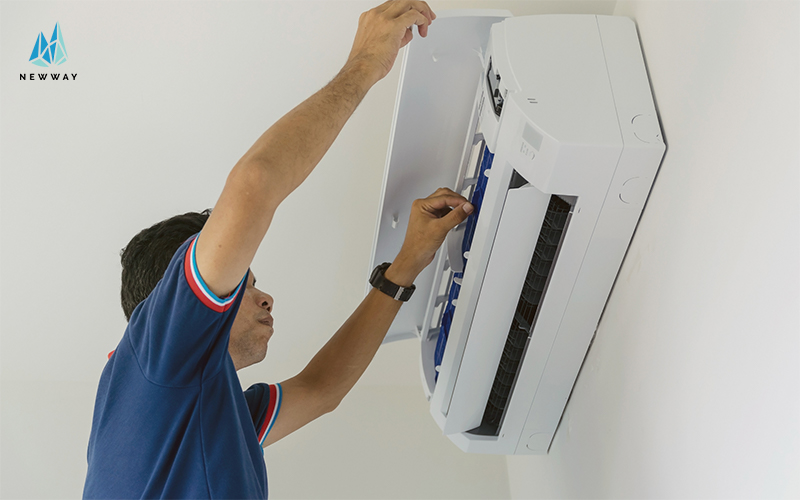
PART 3 – THE INSTALLATION PROCESS
3.1. Aircon Installation: A Step-By-Step Guide
Installing an air conditioning system is a multi-step process that requires careful planning and precise execution to ensure optimal performance and efficiency. This guide will walk you through each step of the installation process, from initial planning to final adjustments, ensuring that your air conditioner is installed correctly and functions effectively. Whether you’re considering a Mitsubishi aircon installation in Singapore or another brand, these steps promise the best results.
1. Planning
Proper planning lays the foundation for successful aircon installation. HVAC technicians often start by determining the size and layout of the space to be cooled. After calculating the cooling load based on factors such as room size, insulation, and the number of occupants, they recommend a unit with the right capacity and features to meet your cooling needs. You may want to consider energy efficiency ratings and additional features like programmable thermostats and air purifiers. Also, be mindful of selecting a suitable location for installation and making sure there is enough space around the unit for air circulation and maintenance access.
2. Gathering Tools and Materials
The next step is getting all the necessary tools and materials ready. Some necessary ones include screws, brackets, mounting hardware, electrical components, ductwork, insulation, and sealing materials. The installation process may also require a drill, level, screwdrivers, pipe cutter, vacuum pump, refrigerant gauge set, and electrical testers. Complementing the professionalism of aircon service experts, this equipment ensures that your air conditioning system is installed correctly and functions efficiently.
To ensure the extended longevity of your air conditioning unit, Newway has upgraded our installation materials by using a more expensive and thicker refrigerant copper pipe. We provide PSB-certified refrigerant copper pipes with a minimum specification of SWG 22 (based on manufacturer guidelines). This also comes with an optional upgrade to SWG 21.
3. Indoor Unit Installation
A sturdy wall is necessary for mounting the indoor unit to support its weight. Professionals will securely attach the mounting plate to the wall using screws and brackets.
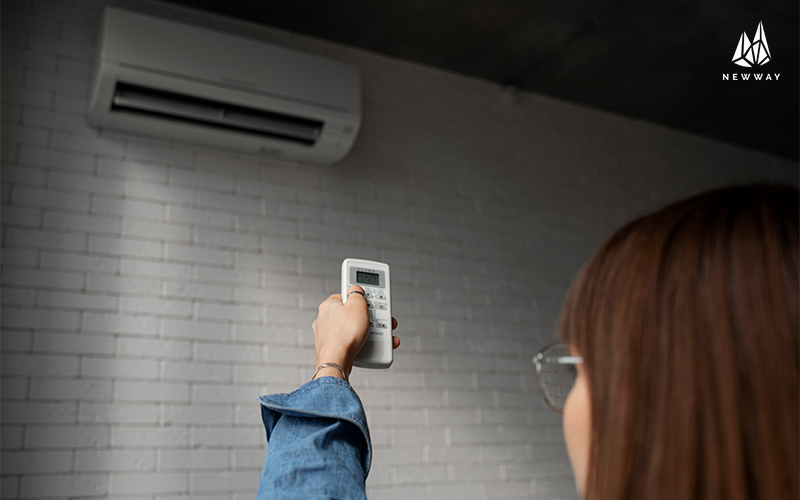
4. Outdoor Unit Installation
For outdoor units, it’s best to choose a flat, stable surface such as a concrete pad to support the unit’s weight. Professional aircon contractors usually allow a minimum clearance of at least 12 inches around the unit for good ventilation. Additionally, they will add stability to the anchoring process with brackets and bolts.
5. Refrigerant Charging and Electrical Connections
Refrigerant charging and safe electrical connections are vital in maintaining system efficiency and safety. Firstly, HVAC technicians will use a vacuum pump to evacuate and purge the refrigerant lines, removing air and moisture to prevent system damage. Next, they will accurately charge the system with the correct amount of refrigerant as specified by the manufacturer, as overcharging or undercharging can negatively impact efficiency and performance. The process ends with proper electrical wiring to secure all connections, preventing potential leaks or electrical hazards. Meanwhile, be mindful that all installation works in Singapore must be performed by trained refrigerant handlers.
6. Testing
Upon completion, professional aircon contractors will carry out thorough testing to identify whether the system operates correctly and efficiently. As part of the process, they may use a thermometer to measure the temperature differential between the intake and exhaust air. Additionally, they listen for any unusual noises that could indicate issues, and inspect all connections and components for refrigerant or water leaks. Finally, the thermostat is checked to confirm it accurately controls the system and responds to temperature settings.
7. Final Adjustments
Based on your preferences, aircon installation service providers can ensure even cooling throughout the space by fine-tuning the system such as adjusting the fan speed, airflow direction, and temperature setpoints. For optimal energy usage and comfort, you can request to set up programmable features such as timers and schedules.
8. Cleanup and Documentation
Proper cleanup and documentation finalise the installation process. HVAC technicians remove all installation debris and packaging materials from the site to keep the area tidy and safe. They also demonstrate how to operate the air conditioning system and explain common troubleshooting steps and maintenance tips.
3.2 Professional Aircon Installation
When considering air conditioning installation services, entrusting the job to a professional offers you peace of mind. Here are key factors to take into consideration when selecting an aircon expert in Singapore, such as those specialising in Daikin aircon installations.
Things to Consider When Hiring a Professional Air Conditioning Installation Service
1. Expertise and Experience
Choose a service provider with extensive experience and technical expertise in air conditioning installations. Experienced technicians are more likely to handle complex installations smoothly, anticipate potential issues, and provide effective solutions. For instance, they are able to accurately assess your home’s cooling requirements and select the right unit size, even if your home has a unique layout with multiple rooms.
2. Credentials
Verify the credentials of the service provider. This includes checking for necessary licenses, certifications, and insurance. A licensed and certified installer adheres to industry standards and regulations, giving you greater assurance that the job will be completed safely and correctly.
3. References and Reviews
Look for references and read online reviews to gauge the reputation of the installation service. Positive feedback from previous clients can indicate reliable and high-quality service. For a more in-depth assessment, ask the service provider for references. Speaking directly with past clients allows you to get first-hand accounts of their experiences. You can also inquire about the timeliness of the service, the professionalism of the technicians, and the overall quality of the installation.
Why Opt For Professional Installation?
1. Efficiency and Accuracy
Professional installers possess the know-how and the right equipment to complete the installation efficiently and accurately. They ensure that the air conditioning system is correctly sized for your space, optimally placed, and securely installed. All of these maximise cooling performance and energy efficiency.
2. Aircon Longevity
Professional air conditioning installation services extend the lifespan of your air conditioner, making your investment worthwhile. With their in-depth knowledge of manufacturer guidelines and local building codes, these experts ensure that all components, including ductwork, electrical connections, and refrigerant lines, are installed properly. This reduces the risk of future malfunctions and ensures that the unit operates smoothly in the long run.
3. Safety Precautions
Installing an air conditioning system involves handling electrical components and refrigerants. If mishandled, it may result in safety hazards. This is where professional installers step in. They follow strict safety protocols and safety regulations to prevent accidents.
4. Post-Installation Support
One of the key benefits of hiring a professional air conditioning installation service provider is the ongoing support they provide. Reputable installers offer post-installation services, including maintenance, troubleshooting, and warranty support. In addition to keeping your air conditioning system in top condition at all times, they always address issues in a timely manner.
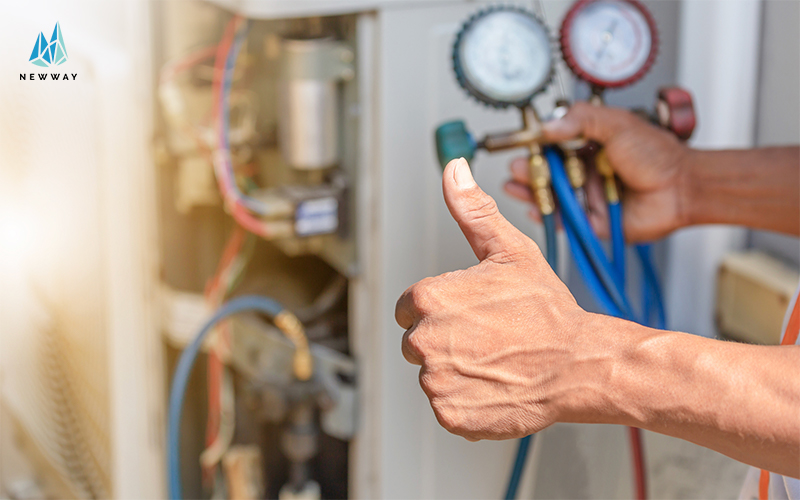
3.3 Questions You May Have
1. What type of air conditioner is best for my space?
The best type of air conditioner depends on factors such as the size of the space, layout, and insulation. Common ones include window units, split systems, central air conditioning, and portable units.
2. Can I install the air conditioner myself, or do I need a professional?
While some individuals may opt for DIY installation, hiring an HVAC expert helps to ensure proper installation and overall safety. With their skills and knowledge, rest assured that the process will go smoothly.
3. What maintenance tasks are required after air conditioning installation?
Regular maintenance tasks include cleaning or replacing air filters, as well as ensuring proper airflow and ventilation. Scheduling annual maintenance with a professional HVAC technician is recommended.
CONCLUSION
When investing in a new air conditioning system in Singapore, carefully evaluate your unique requirements and various factors, from selecting the appropriate system to diving into health implications and ecological footprint. Each step plays a vital role in shaping our residential and professional spaces. With a strategic approach, you can achieve enhanced comfort and improved air quality with efficient system operation, keeping your home a refreshing retreat from the heat.
Based in Singapore, Newway has been offering an ideal cooling experience for both residential and commercial air conditioning customers. Contact us now to find out more about our air conditioning services.

